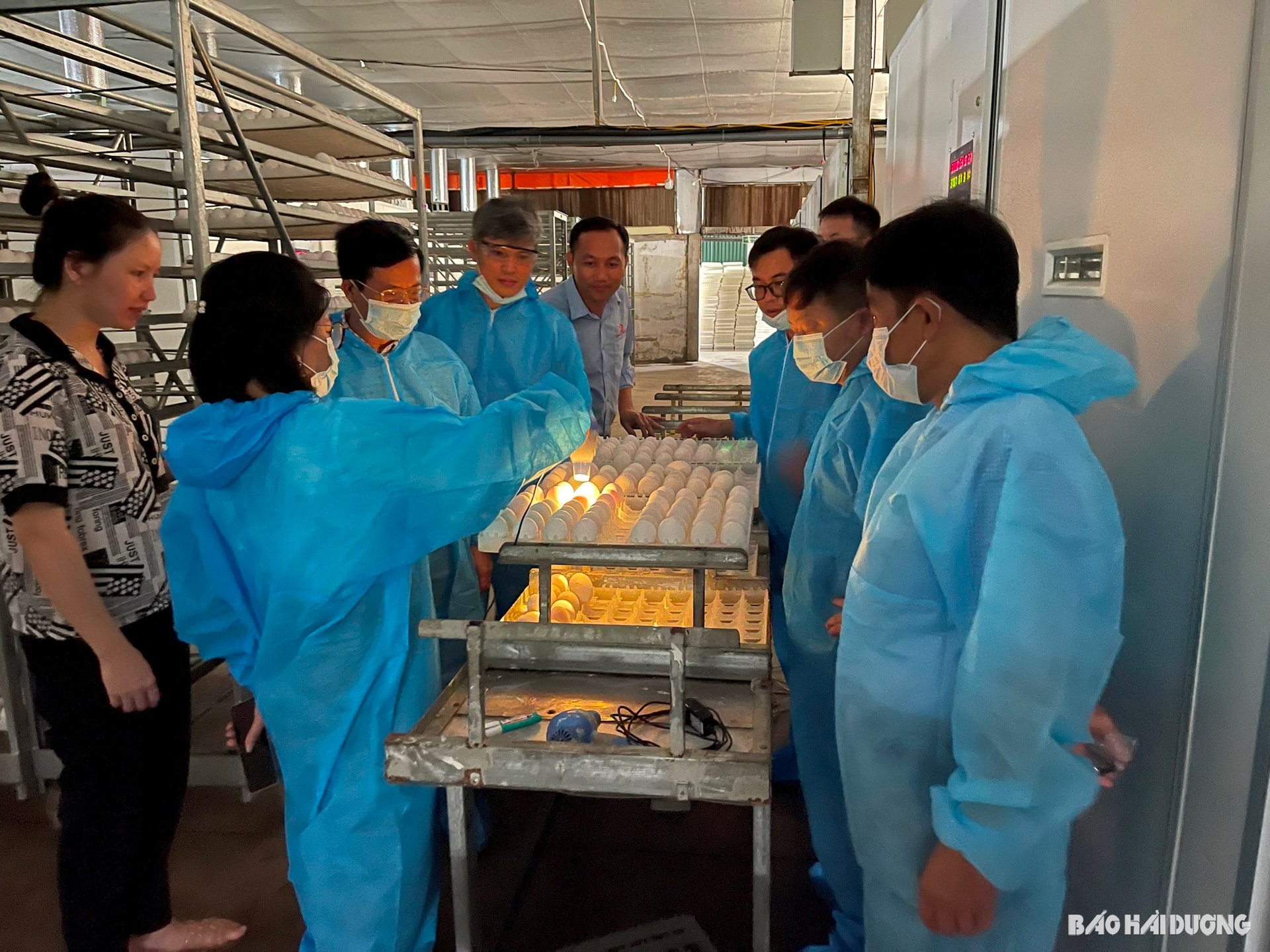To have a healthy flock of chickens, grow well and minimize disease, the brooding stage is very important.

After storm No. 3 and floods, there were heavy losses in production and livestock, including poultry farming in many localities in the North as well as in Hai Duong. Immediately after overcoming the consequences of the storm, poultry farms have planned to prepare for re-herding, in order to maintain livestock farming and ensure food supply for consumers. In poultry farming, the brooding stage is very important to have a healthy flock of chickens, grow and develop well, and minimize disease. To do a good brooding stage, farmers need to pay attention to the following techniques:
Housing and equipment
Preparing a brooding cage is indispensable in the process of raising chickens at all scales. When brooding poultry, the temperature must be warm in winter and cool in summer, absolutely avoiding rain and drafts.
Farmers should use bedding such as rice husks, sawdust or straw. Rice husks are preferred because they absorb moisture well and are cheap. Only cover the bedding with a thickness of 9-13 cm is appropriate.
The brooding density will be gradually reduced according to the number of weeks of age of the chickens. Specifically, the appropriate density is as follows: week 1: 30 - 40 chickens/m2Week 2: 20 - 30 fish/m2Week 3: 15 - 25 fish/m2; week 4: 12 - 20 fish/m2.
Feeding and drinking troughs during the young chicken stage can use trays or trays measuring 50 x 50 cm, density 50 chickens/tray, then gradually change the feeding troughs according to each age; during the brooding stage, use 1 liter plastic troughs for drinking.
Barn temperature
There are several methods of using heat during the brooding process including:
Use light bulb:You should use infrared bulbs with capacity depending on the number of chickens to brood.
Use charcoal stove:Often applied to large-scale poultry farms due to its reasonable price. However, when using this method, farmers must be very careful to avoid poultry being suffocated by coal emissions.
Select breed
Breed selection is a major factor in the effectiveness of livestock farming, including meat and egg production. Farmers should choose healthy chickens with bright eyes, fluffy feathers, quick movement, and even...
Brooding technique
Temperature:Depending on the season and weather, adjust the brooding temperature appropriately and monitor the status of the chickens to know the temperature level. In case the chickens stand together near the light bulb or charcoal stove, the chickens are lacking heat, farmers need to increase the temperature. When they are seen spreading apart, drinking a lot of water, the chickens are hot. In case the coop is exposed to rain and wind, the chickens will gather in a hidden place. Monitoring the brooding temperature is very necessary, a thermometer should be placed in the coop. Specific temperatures for each stage of brooding chickens: g0 - 7 days old is 31 - 320C; chickens 8 - 21 days old 28 - 300C; 22 - 28 day old chickens 22 - 280C.
Lighting during brooding is very important for chicks because it helps them eat more and stimulates their body to grow.
Newly imported chicks must be given water mixed with glucose and electrolyte vitamin C. This should be given to the chicks in the first 2-3 hours to prevent stress and increase resistance.
Chicks need to be fed high quality, nutritious food that is easy to digest. Feed them several times a day, a little at a time, to keep the food fresh.
During the brooding period, farmers must always keep the barn clean, dry, cool and warm in winter. Change the bedding immediately when it gets wet, always clean the feeders and drinkers and periodically spray disinfectant in the barn...
Vaccine schedule
Marek's disease vaccine for 1-day-old chickens;
First Lasota vaccine for 3-5 day old chickens;
Chicken pox vaccine for chickens at 7 days old;
First Gumboro vaccine for 10-day-old chickens and second Lasota vaccine at 21-24 days old.
Regularly listen to weather and disease information on poultry flocks to have appropriate farming plans, minimizing damage caused by nature and disease.
NGUYEN MINH DUC, Department of Animal Husbandry and Veterinary Medicine of the province